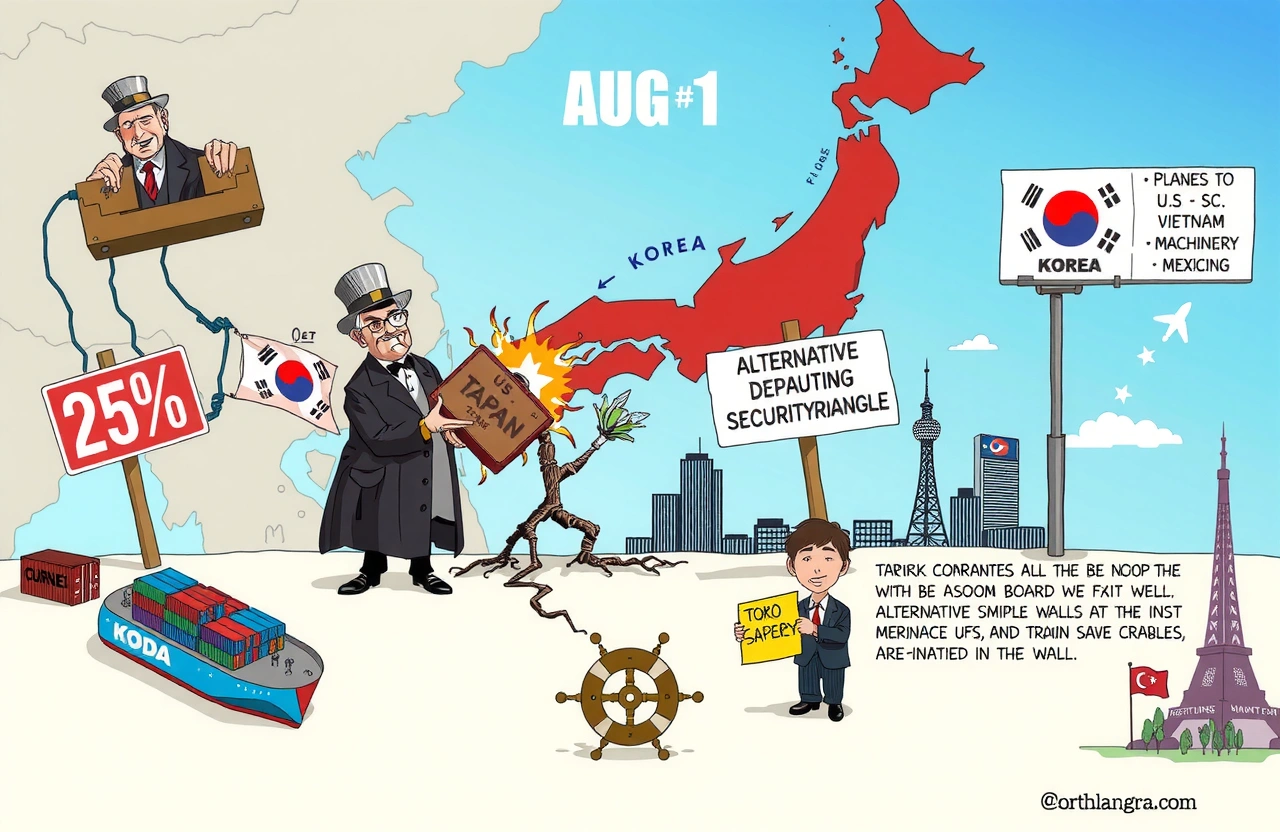– President Trump imposes 25% tariffs on all Japanese and South Korean imports
– Policy takes effect August 1, 2025 citing trade deficits and national security
– Immediate market impact: Yen and Won plummet, Japanese automakers plunge
– Exemptions for US-based production but retaliation threats against counter-tariffs
The Unprecedented Tariff Declaration
Former President Donald Trump dramatically altered the global trade landscape with a late-night social media announcement on July 7. In personal letters addressed to Japanese Prime Minister Shigeru Ishiba (石破茂) and South Korean President Lee Jae-myung (李在明), Trump declared that all Japanese and Korean exports entering the United States would face 25% tariffs starting August 1, 2025. This sweeping decision—independent of existing industry-specific tariffs—represents one of the most aggressive tariff moves targeting major Asian allies in modern trade history.
The policy explicitly threatens even higher duties for any attempts to circumvent restrictions through third-country transshipments. Notably, Trump conditioned retaliation measures: “If Korea and Japan decide to increase tariffs against us, America will impose additional tariffs of the same magnitude atop the existing 25%.” This escalation comes despite Trump acknowledging ongoing cooperation with both nations, framing the tariffs as necessary remedies to “imbalanced trade” threatening US economic security.
The National Security Rationale
Instantaneous Market Shockwaves
Financial markets convulsed within hours of the announcement:
– Yen and Won plunged sharply against the dollar
– Dow Jones, Nasdaq and S&P 500 indices fell over 1%
– Toyota Motor Corporation NYSE ADRs tumbled 4%
– Nissan Motor shares crashed 7% – worst decline since February
The currency volatility particularly rattled investors, given Japan and South Korea’s status as the 4th and 10th largest US trading partners respectively. Federal Reserve monitoring systems reportedly detected abnormal forex volatility overnight as algorithmic traders reacted to the news.
Automaker Carnage
The New Tariff Framework
Unlike previous tariff measures, this policy introduces:
1. Blanket coverage across all sectors
2. No sunset provision
3. Anti-circumvention mechanisms
4. Conditional reciprocity clause
The tariffs carry explicit incentives for manufacturing reshoring: “Companies choosing to build plants or produce goods within America’s borders will be exempt.” Commerce Department insiders suggest this provision specifically targets automakers utilizing North American factories like Honda’s Ohio operations.
Third-Country Enforcement
Geopolitical Fallout
Supply Chain ImplicationsCorporate Countermeasures
Global Trade Repercussions
The tariffs inject new uncertainty as economists note:
– Potential violation of WTO most-favored-nation principles
– Likely challenges through dispute settlement mechanisms
– Risks of retaliatory measures escalating global trade tensions
Emerging evidence suggests companies are already exploring ASEAN manufacturing alternatives to bypass tariffs.
The focus phrase ‘tariffs on Japan and South Korea’ represents one of the more dramatic escalations in trade policy since US-China tariffs—except now targeting American treaty allies. Contingency planners advise companies:
– Conduct urgent supply chain vulnerability assessments
– Model landed cost impacts
– Pursue immediate WTO technical consultations
US companies facing raw material shortages should proactively explore Hart-Scott-Rodino certified domestic suppliers through Consult your US Chamber of Commerce district representative for supply chain diversification assistance. Financial advisors unanimously recommend stress-testing portfolios against prolonged tariff exposure scenarios following these market tremors.




